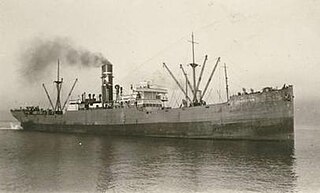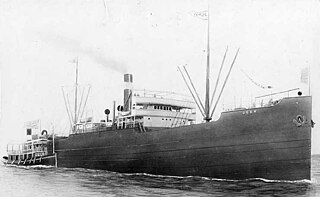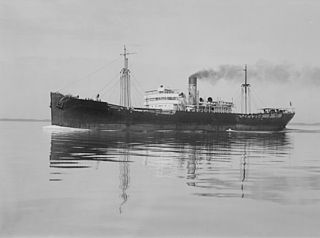This page is based on this
Wikipedia article Text is available under the
CC BY-SA 4.0 license; additional terms may apply.
Images, videos and audio are available under their respective licenses.

The Victory ship was a class of cargo ship produced in large numbers by North American shipyards during World War II to replace losses caused by German submarines. They were a more modern design compared to the earlier Liberty ship, were slightly larger and had more powerful steam turbine engines giving higher speed to allow participation in high speed convoys and make them more difficult targets for German U-boats. A total of 531 Victory ships were built.

Thielbek was a 2,815 GRT cargo steamship that was built in Germany in 1940, sunk in an air raid in 1945, refloated in 1949 and repaired, and was in service until 1974. Lübecker Maschinenbau Gesellschaft in Lübeck built her in 1940 for the Knöhr and Burchard shipping company of Hamburg. In 1961 Knöhr and Burchard sold her to buyers who renamed her Magdalene and registered her in Panama. In 1965 she was renamed Old Warrior. She was scrapped in Yugoslavia in 1974.

SS Deutschland was a 21,046 gross registered ton (GRT) German HAPAG ocean liner which was sunk in a British air attack on May 3, 1945 when it was in the process of being converted as a hospital ship. All people on-board the Deutschland survived the attack, though two accompanying vessels sank with great loss of life.

The SS Tiberton was a British steam cargo ship that was sunk during World War II by the German submarine U-23.

HMS Forfar (F30), formerly the ocean liner SS Montrose, was an armed merchant cruiser commissioned into Royal Navy service in 1939 and sunk in 1940.

SS Fiscus was a UK cargo steamship that was built in 1928, served in the Second World War and was sunk by a U-boat in 1940.
HMS Heartsease was a Flower-class corvette of the Royal Navy. She served with both the Royal Navy and the United States Navy during the Second World War, with the latter navy as USS Courage. She then spent several years under a succession of names in civilian service. In 1957 she was chartered on behalf of Indonesian rebels to smuggle rubber, copra and matériel. The Indonesian Air Force intercepted and sank her off the coast of Minahasa in North Sulawesi in December 1958.
The third SS Patroclus was an 11,314-ton cargo liner of the Blue Funnel Line launched in 1923.
Commissioned into the Royal Navy as the Armed Merchant Cruiser HMS Patroclus on 12 September 1939, she was torpedoed and sunk by the German submarine U-99 on 4 November 1940.

USS Jean (ID-1308) was a cargo ship that served in the United States Navy from 1918 to 1919.

SS West Elcajon was a steel-hulled cargo ship built in 1918 for the United States Shipping Board's World War I emergency wartime shipbuilding program.
A number of steamships have been named Marie.
USS West Mead (ID-3548), also spelled Westmead, was a United States Navy cargo ship in commission from 1918 to 1919.
Three ships were of the Royal Mail Line were named RMS Magdalena.
A number of steamship have been named Goodleigh, including –
Three ships have borne the name Consul Horn, all owned, for at least part of their career, by the German Shipping Company HC Horn:

SS Beaverford was a cargo liner operated by the Canadian Pacific Steamship Company. Built in 1928 for freight service between Montreal and London, she was sunk on 5 November 1940 during the Battle of Convoy HX 84 while fighting to allow other ships in the convoy to escape the German pocket battleship Admiral Scheer.
Several steamships have borne the name Ajax:

The SS Runic was a steamship built at Harland and Wolff in Belfast for the White Star Line which entered service in 1901. Runic was the fourth of five Jubilee Class ocean liners built for White Star's Australia service along with her sister ship SS Suevic, where she ran on the Liverpool–Cape Town–Sydney route. She served this route until she was requisitioned for use as a war transport between 1915 and 1919, before returning to the Australia service.

The Jubilee class were a group of five passenger and cargo ocean liners built by Harland and Wolff at Belfast, for the White Star Line, specifically for the White Star Line's service from the UK to Australia on the Liverpool–Cape Town–Sydney route. The five ships in order of the dates they entered service were:











